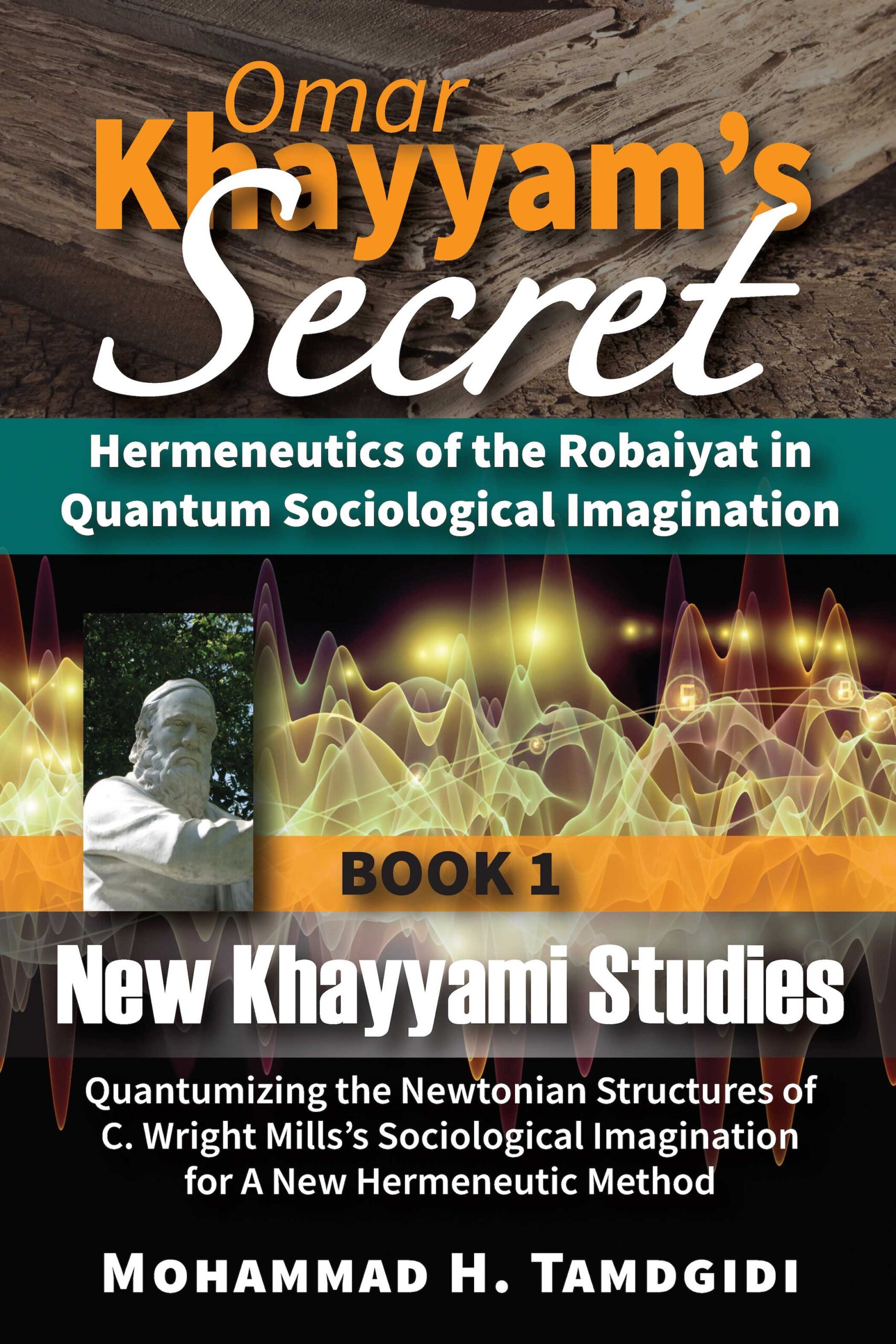Book Section: CHAPTER II — The Newtonian Way of Imagining Reality, Society, Sociology, and Khayyami Studies — by Mohammad H. Tamdgidi
$20.00
This essay, titled “The Newtonian Imagination of Reality, Society, Sociology, and Khayyami Studies,” is the second chapter of the first book, subtitled New Khayyami Studies: Quantumizing the Newtonian Structures of C. Wright Mills’s Sociological Imagination for A New Hermeneutic Method, of the twelve-book series, Omar Khayyam’s Secret: Hermeneutics of the Robaiyat in Quantum Sociological Imagination, authored by Mohammad H. Tamdgidi.
Description
Abstract
This essay, titled “The Newtonian Way of Imagining Reality, Society, Sociology, and Khayyami Studies,” is the second chapter of the first book, subtitled New Khayyami Studies: Quantumizing the Newtonian Structures of C. Wright Mills’s Sociological Imagination for A New Hermeneutic Method, of the twelve-book series, Omar Khayyam’s Secret: Hermeneutics of the Robaiyat in Quantum Sociological Imagination, authored by Mohammad H. Tamdgidi.
To offer a heuristic model of the Newtonian way of imagining reality, society, sociology and the sociological imagination and demonstrate (in a following chapter) how such a perspective is different from the quantum way of imagining them, the author uses in this chapter the “billiard balls game” metaphor that has been widely used (in his view wrongly) to characterize the Newtonian way of imagining the world.
According to Tamdgidi, the Newtonian way of imagining, or thinking about, the universe may be broadly characterized as having eight notional attributes—namely, its notions of (1) dualism, (2) atomism, (3) separability, (4) (subjectless) objectivity, (5) determinism (including its associated notion of predictability), (6) continuity, (7) disciplinarity, and (8) scientism—which can be illustrated by using a (what he argues is an ideologically distorted) metaphorical “billiard balls game” way of imagining reality as commonly used for the purpose.
More specifically the attributes of Newtonian imagination Tamdgidi explores are in terms of the following questions: 1. Dualism: can an object be A and non-A at the same time? 2. Atomism: what is the micro unit of analysis of the object? 3. Separability: what is the macro unit of analysis of the object? 4. Objectivity: does the object being observed have an independent reality? 5. Determinism: are causes and consequences in objects certain and predictable? 6. Continuity: is influence exerted through chains of local-causations? 7. Disciplinarity: fragmenting our knowledge of reality? And 8. Scientism: presuming the superiority of Western, Newtonian way of thinking?
The author uses the above framework to show how such parameters also have shaped our Newtonian conceptions of society, sociology, and the sociological imagination, and may also continue to frame our Khayyami studies if we fail in bringing them to conscious awareness as a precondition for reframing our sociological and Khayyami studies in more fruitful, quantum ways.
Tamdgidi concludes by summarizing a vision of “classical,” “Newtonian sociology” that can clarify further the implications the broader Newtonian vision he outlined above has for shaping the “classical” sociological vision, and the sociological imagination as a framework for conducting Khayyami studies.
Introducing a diagram for the Newtonian sociological imagination, Tamdgidi notes that what makes the sociological imagination Newtonian is not simply that it avoids studying linkages between its elements. What makes it Newtonian is its treating those elements in a “chunky” way, in presuming that the elements are separate billiard balls to begin with, that they do not overlap with one another, instead simply needing to be linked with another, to interact with one another from “without,” in order to make the imagination work. It does not imagine those elements as already embedded in dialectical part-whole relations of identity in difference, of difference in identity.
Recommended Citation
Tamdgidi, Mohammad H. 2021. “CHAPTER II — The Newtonian Way of Imagining Reality, Society, Sociology, and Khayyami Studies.” Pp. 61-108 in Omar Khayyam’s Secret: Hermeneutics of the Robaiyat in Quantum Sociological Imagination: Book 1: New Khayyami Studies: Quantumizing the Newtonian Structures of C. Wright Mills’s Sociological Imagination for A New Hermeneutic Method. (Human Architecture: Journal of the Sociology of Self-Knowledge: Vol. XIV, 2021. Tayyebeh Series in East-West Research and Translation.) Belmont, MA: Okcir Press.
Where to Purchase Complete Book: The various editions of the volume of which this Book Section is a part can be ordered from the Okcir Store and all major online bookstores worldwide (such as Amazon, Barnes&Noble, Google Play, and others).
The Robaiyat of Omar Khayyam has also been referred to as “Rubaiyat of Omar Khayyam” (in Persianرباعيات حكيم عمر خيام نيشابوري) using an alternative transliteration from the Persian (or Arabic).






